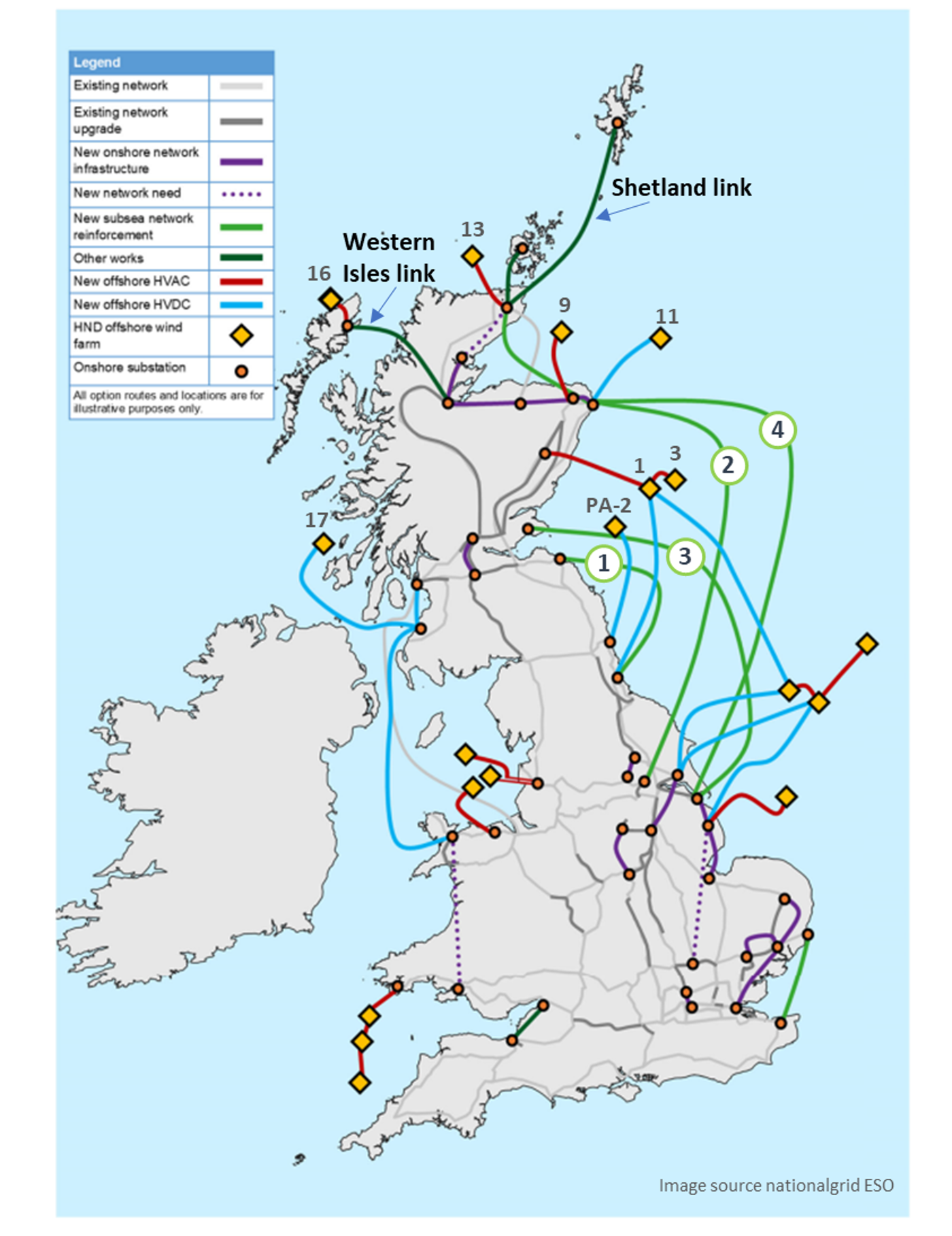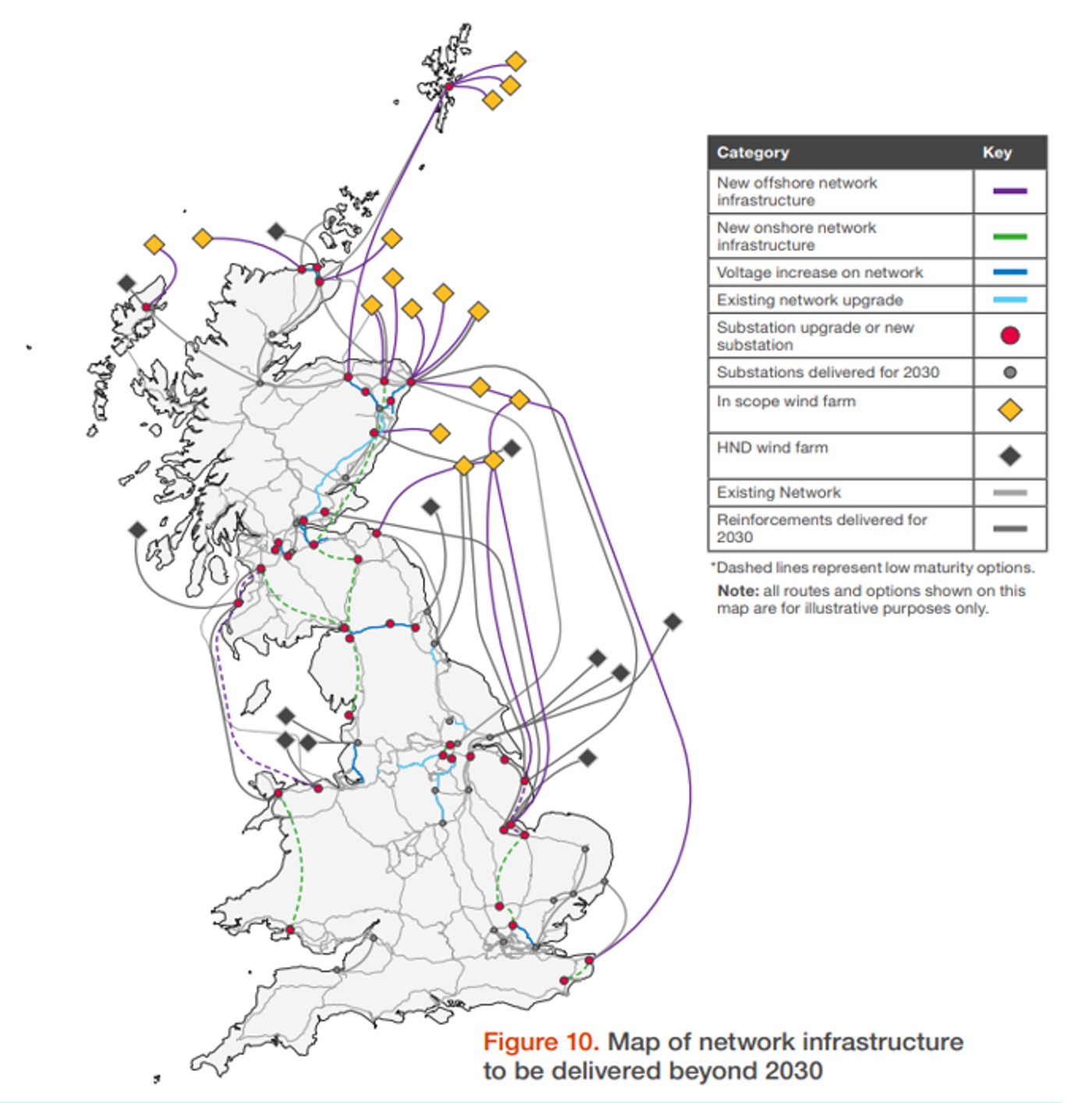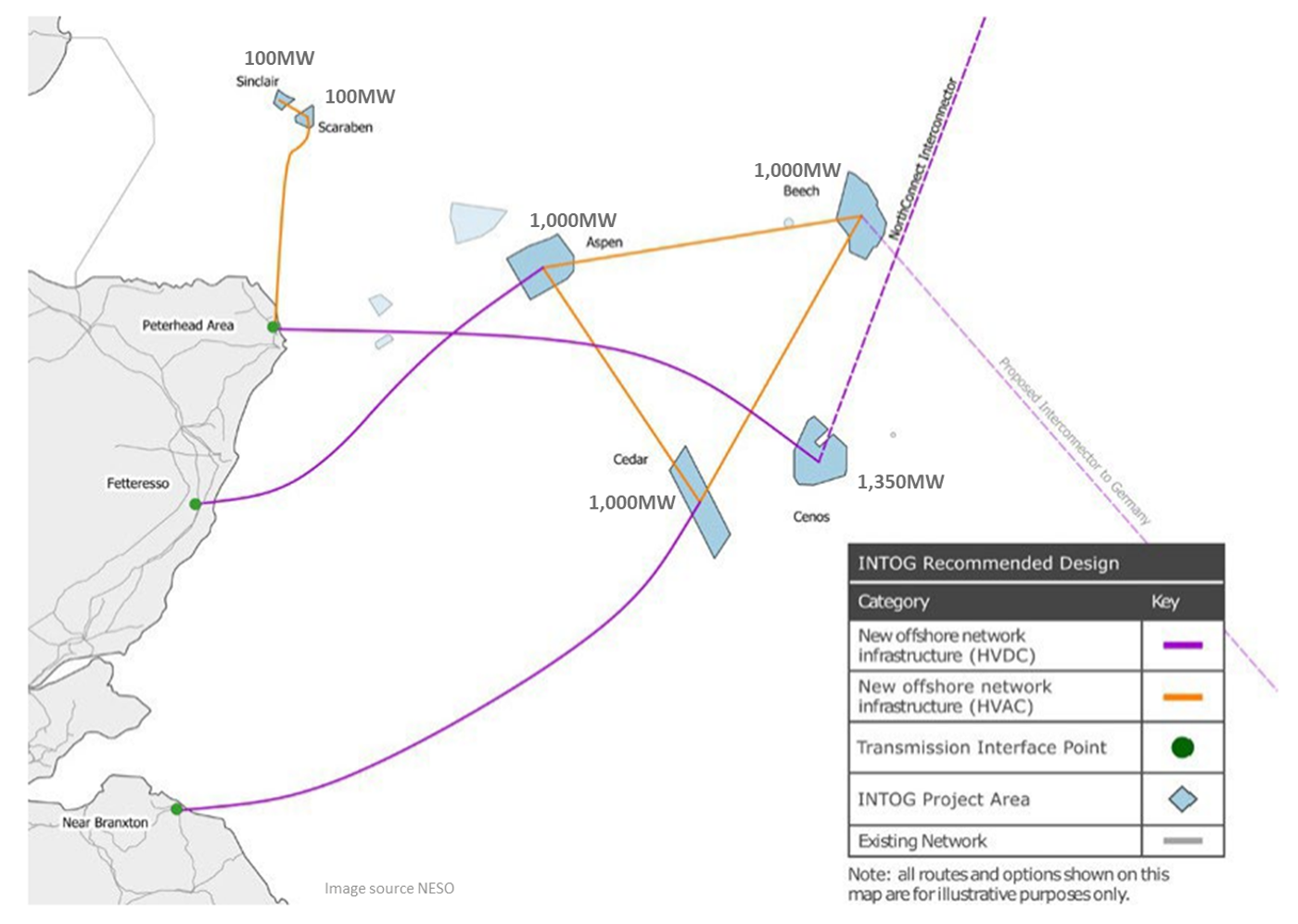The UK grid was planned and laid out in an era of coal and gas fired power stations. This was usually in a radial hub and spoke arrangement with central power production delivered out to the periphery. This was very evident in Scotland where power stations were situated in the industrial and high population density areas in the Central Belt and East Coast. Transmission and distribution networks then fed this power out to more rural and remote areas including the Scottish Islands.
Today the rise of renewable power, and of offshore wind in particular, has turned this situation completely on its head. Most of the best wind resources are on the periphery and, away from the East Coast area, mostly in areas of low population density. In order to service this new paradigm we need to design grid infrastrure that will bring electricity from offshore wind farms to the centres of demand in the UK.
Government and industry are now working together to solve this new challenge and repurpose the UK grid infrastructure for the 21st Century. In 2020 the Department for Business, Energy and Industrial Strategy (BEIS) launched the Offshore Transmission Network Review (OTNR). This has now resulted in the Holistic Network Design (HND July 22) which is aimed at adding 23GW of offshore wind to the UK system by 2030, 12.5GW of which is in Scotland.
Scotland has been a major exporter of energy for decades. Not just from its oil and gas fields of the last 50 years but by also exporting power from its onshore wind and hydro power facilities during peak periods. Scotland's ability to export green power is about to increase exponentially over the next 10 years with almost 50GW of wind power in its project pipeline. The bulk of this new production, 38GW, will come from offshore wind.
Holistic Network Design
The HND project consists of both onshore and offshore upgrades and extensions. It includes HVAC and HVDC elements as well as multi-terminal HVDC systems. The list of Scottish projects in scope for HND is set out below and although we await a Detailed Network Design (DND) as a follow up to HND this list represents the ScotWind projects most likely to connect to the grid before 2030. A further HND report is already underway and is due to be published before the end of 2023. It will look at adding all the remaining ScotWind projects, along with some INTOG projects, to the system.
|
SITE |
DEVELOPERS |
CAPACITY |
|
1 |
BP and EnBW |
1,500MW |
|
3 |
Renantis and BlueFloat Energy |
1,200MW |
|
9 |
Ocean Winds |
1,500MW |
|
11 |
ScottishPower Renewables and Shell |
1,500MW |
|
13 |
RIDG, Corio Generation and TotalEnergies |
2,250MW |
|
16 |
Northland Power |
740MW |
|
17 |
ScottishPower Renewables |
2,000MW |
|
PA-2 |
SSE Renewables (Berwick Bank) |
1,800MW |
|
Total |
12,490MW |
Please note that the HND is not proposing to connect the full capacity of some of the above projects but just their initial phases as shown in the capacity figures in the list.
The map below shows the position of all the offshore wind projects in the list, the newly proposed 1.8GW HVDC Western Isles link along with the HVDC Shetland link which is currently under construction. The four proposed HVDC Eastern Links are also numbered on the map.
These are:
Eastern Green Link 1 – Torness to Hawthorn Pit (196km)
Eastern Green Link 2 – Peterhead to Drax (505km)
Eastern Green Link 3 – Peterhead to South Humber (550km)
Eastern Green Link 4 – Kinghorn, Fife to South Humber (500km)
With an overall cost estimate of between £12.5bn-£14.5bn, these links will help speed up the delivery of other ScotWind projects.
Holistic Network Design Map
*hover / touch to see more information
The Beyond 2030 planned connections are shown in the map below. These are the NESO preferred options to connect the rest of the ScotWind round lease sites. NESO and OFGEM are currently overhauling the rules for the UK's grid queue with the intention of speeding up the delivery of 'shovel ready' projects and some of these sites may now see connection dates coming forward to help the UK reach its 2030 target of between 43GW-50GW of operational offshore wind.
Beyond 2030 - NESO preferred options
*hover / touch to see more information
The final round of connections are for the INTOG East Coast sites and the map below now shows NESO's preferred approach to connect these sites. This includes options to connect potential interconnectors to Norway and Germany to some of these INTOG projects as part of a new Offshore Hybrid Assets (OHA) approach to offshore grid infrastructure utilising multi-terminal HVDC technology. This technology has already been deployed commercially for the first time in Europe by SSE Networks for their Shetland HVDC Link and Caithness-Moray HVDC Link inn the North of Scotland.
INTOG East Coast - NESO preferred options
*hover / touch to see more information

